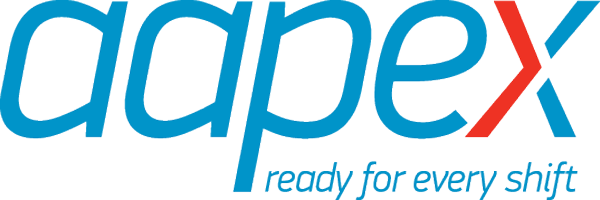AAPEX is a Technology Show
Monday, October 15, 2018
By Paul McCarthy, Executive Vice President, Automotive Aftermarket Suppliers Association (AASA)

So, when did we wake up one morning and the aftermarket had become a technology industry? Because make no mistake: the aftermarket is now a technology industry.
And AAPEX has changed to represent that new reality.
Many years ago, we all made, distributed and sold parts, chemicals and tools to repair and maintain vehicles.
Then the world started to change bit by bit.
On the vehicle side, there was emissions equipment and OBD ports and diagnostics. Then fuel injection, turbochargers, hybrids and other high technology.
On the business side, there were computers and databases, eventually data exchange and digital catalogs. The technology just kept growing and growing. Things really exploded when the Internet came along. And the world changed again when the smartphone – the supercomputer in our pocket – arrived.
And we haven’t seen anything yet.
As we look to the vehicle side, we see radical evolution. A future of CASE technology: Connected, Automated, Shared and Electrified. This software future will change what needs to be maintained or repaired on a vehicle, how we diagnose and prognose what a vehicle needs, and how the aftermarket connects with customers.
Vehicles will still have wheels to carry passengers and goods, but slowly most everything else is changing. Our cars are already mobile computers, helping us drive. We’ve all heard the oft-quoted statistic that modern cars contain multiples of the lines of code in a space shuttle. ADAS – advanced driver assistance systems – are already a healthy, growing segment of the aftermarket parts market.
On the business technology side, the independent aftermarket continues to apply innovation to ensure the right part is delivered to the right place at the right time. It increasingly uses data analytics, machine learning, robotics, voice picking and other automated warehouse technologies to innovate, satisfy consumers and reduce costs.
One area the industry is improving is the willingness and ability to seek out and partner with non-traditional suppliers of technologies and applications. While these new players are considered disruptive by many, these companies bring innovation and creative thinking to a historically slow-changing industry. The future is easier to manage if you have learned how to work with a different breed of companies.
Technologies on the horizon include AR/VR (augmented reality/virtual reality) applications for repair shops for analyzing, diagnosing and servicing complex vehicle systems; integrating and programming sophisticated on-board computer networks; and taking advantage of the increasing amounts of vehicle data available through telematics applications. Dongle-based customer relationship management applications for shops will transform how we build and retain relationships with customers. And yes, we will be able to repair these complex new vehicles. Advanced shops are learning new capabilities to service and recalibrate ADAS-equipped and electrified vehicles.
How do we know we are a technology industry? Industries are defined in part by their success factors. Many of us still manufacture, box, ship and deliver lots of goods. But there is no doubt that technology is a key success factor. If we talked about any company in the aftermarket with class-leading profit margins, we would all expect to see a company that is doing well on advanced technology. And more likely: that company is ahead of the curve.
There is no doubt that aftermarket is now a technology industry. And AAPEX has responded to that change.
We all know that our industry is changing. We are seeing new players. We are seeing new business models and new opportunities for existing players. Elements of aftermarket suppliers are becoming a service industry, as much as a parts, chemicals, or tools industry. AAPEX has become place to make those connections between our new and future industry.
For example, AAPEX will have 50 AAPEXedu sessions and Mobility Garage to help us learn and bridge to the new technology future.
The Mobility Garage will feature demos of future shop technology, 40 underhood training sessions and the latest innovations in electric vehicles and alternative fuel vehicles.
As another example, the AAPEX Virtual Vehicle Challenge, located in Mobility Garage, will test attendees’ skills in the shop. Through headsets, attendees will journey into a virtual garage where they can install parts into a car. We are looking forward to a brave new aftermarket .
At AAPEX, the industry will be displaying a demonstration, Secure Vehicle Interface (SVI), in the Technology of Tomorrow section. SVI is a vital piece of the puzzle for a future that ensures consumer freedom of choice in when, where and with what components vehicle maintenance, service and repairs are made.
And the technology and innovation are hardly limited to these areas. Throughout the show, you will see it in exhibitors’ new products, new vehicle technology, and new service innovations. The aftermarket is starting to show itself as well prepared for a future of driver assistance, electrified vehicles and a connected ecosystem.
As you explore AAPEX, I suggest you play a little game. Count every time you see a product or technology in a booth that you would not have seen at AAPEX 10 years ago. I bet you that you will quickly lose count.
AAPEX represents a wonderful venue for the exchange of ideas on transforming the independent aftermarket and exploring ways of working with digital companies. Let’s Tech talks, AAPEXedu technology sessions, technology-focused exhibitors and other elements of AAPEX provide great opportunities for this type of dialog.
For us to survive and thrive as an aftermarket in an evolving industry, we need to visit and learn from the technology displays and providers at AAPEX. Technology is vital to our ability to succeed in the future we face in the aftermarket industry.
